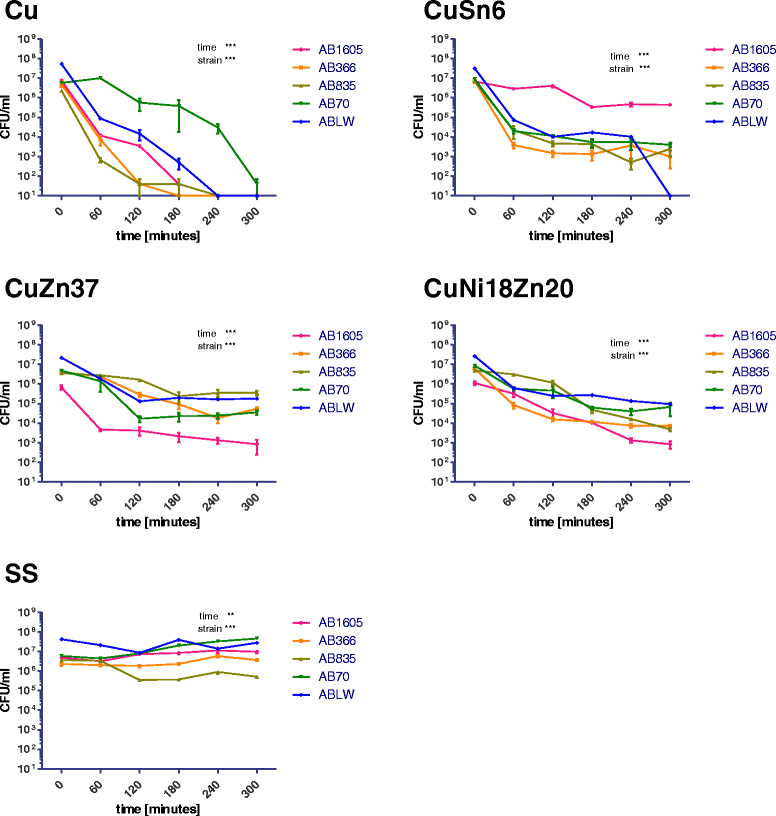Antimicrobial effect of copper alloys on Acinetobacter species isolated from infections and hospital environment
- PMID: 29387344
- PMCID: PMC5778618
- DOI: 10.1186/s13756-018-0300-x
Antimicrobial effect of copper alloys on Acinetobacter species isolated from infections and hospital environment
Abstract
Background: An increased proportion of Gram-negative bacteria have recently been reported among etiologic agents of infection. In Poland, Acinetobacter baumannii is a big problem for hospitals, especially intensive care units. Touch surfaces made from materials with antimicrobial properties, especially copper alloys, are recommended as a supplementary method of increasing biological safety in the hospital environment.
Aim of the study: The objective of this study is to determine the susceptibility to selected copper alloys of three clinical Acinetobacter baumannii strains, one Acinetobacter lwoffi and an A. pittii strain isolated from the hospital environment.
Material and method: The modification of the Japanese Standard, which the ISO 22196:2011 norm was used for testing antimicrobial properties of CuZn37, CuSn6 and CuNi18Zn20 and Cu-ETP and stainless steel as positive and negative control, respectively.
Results: The highest cidal efficiency, expressed as both time and the degree of reduction of the initial suspension density, against all of the tested Acinetobacter strains was found for ETP copper. But, the results of our study also confirmed effective activity (bacteriocidal or bacteriostatic) of copper alloys selected for the study, contrary to the stainless steel. The reduction in bacterial suspension density is significantly different depending on the strain and copper alloy composition.
Conslusions: The results of our study confirmed the effective antibacterial activity of copper and its selected alloys against clinical Acinetobacter baumannii and Acinetobacter lwoffii strains, and Acinetobacter pittii strain isolated from the hospital environment.
Keywords: Acinetobacter; Antimicrobial copper; Hospital environment.
Conflict of interest statement
Not applicableNot applicableThe authors declare that they have no competing interestsSpringer Nature remains neutral with regard to jurisdictional claims in published maps and institutional affiliations.
Figures
References
-
- ECDC. European Center for Disease Prevention and Control. Surveillance and disease data for antimicrobial resistance. Available: http://ecdc.europa.eu/en/healthtopics/antimicrobial-resistance-and-consu...
-
- Chmielarczyk A, Pilarczyk-Żurek M, Kamińska W, Pobiega M, Romaniszyn D, Ziółkowski G, et al. Molecular epidemiology and drug resistance of Acinetobacter baumannii isolated from hospitals in southern Poland: ICU as a risk factor for XDR strains. Microb Drug Resist. 2016;22(4):328–335. doi: 10.1089/mdr.2015.0224. - DOI - PubMed
Publication types
MeSH terms
Substances
LinkOut - more resources
Full Text Sources
Other Literature Sources
Medical
Research Materials


